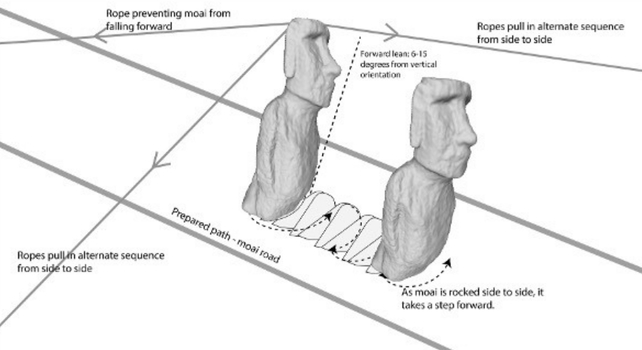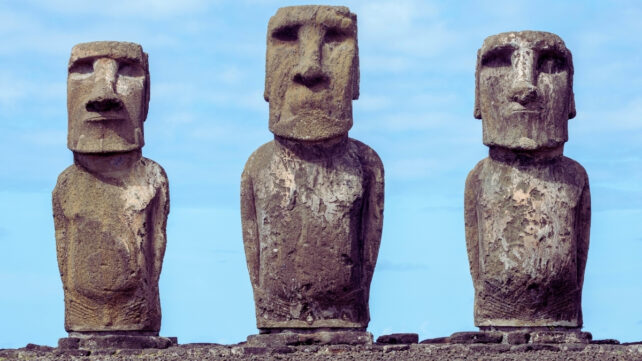The ancient Polynesians who settled the island of Rapa Nui – formerly known as Easter Island – may have worked out an ingenious way to make their iconic moai statues 'walk'.
It's not just local legend; it's physics, say anthropologists Carl Lipo and Terry Hunt, and it could be yet another reason the self-destructive 'ecocide' theory of Rapa Nui is wrong.
In a new paper, Lipo and Hunt argue the ancient people of this remote island hadn't recklessly cut down their trees to transport moai statues on wooden rollers, as the popular tale goes; they didn't need to – they had an easier option.
Related: Researchers Claim Long-Lost Technology Used to Build Iconic Pyramid of Djoser
For centuries, the Indigenous people of Rapa Nui have shared a rhythmic song that tells the story of their ancestors, who knew how to make their statues walk.
Western scholars have long dismissed these oral narratives as metaphorical or mythological, but in 2012, Lipo (from Birmingham University) and Hunt (from the University of Arizona) collaborated with the first Rapanui governor, Sergio Rapu Haoa, to revive the contentious vertical transport theory and give it new legs.
According to their 3D models and experiments, the challenging part is getting the big rock a-rocking, but once it's oscillating from side to side, the statue can waddle forward with little effort and some guidance from rope handlers.

Researchers know because they've tried it. In 2012, 18 people successfully 'walked' a 4.35-ton moai replica 100 meters (328 feet). It took them just 40 minutes.
"The moai walked – the evidence is carved in stone, validated through experiments, and celebrated in contemporary Rapa Nui culture," write Lipo and Hunt in a new paper that responds to their critics.
"The question is why some scholars, despite claiming allegiance to scientific principles, still refuse to accept this model for the transportation of moai."

Evidence is now stronger than ever that the mysterious population collapse of Rapa Nui never actually happened. Recent genetic and archaeological research suggests that the native people of the island are incorrectly blamed for their own demise, when their population collapse was more likely due to slave raids and foreign disease.
In their new paper, Lipo and Hunt take on each of their critics, including author Jared Diamond, who popularized the ecocide narrative of Rapa Nui in his 2005 book Collapse: How Societies Choose to Fail or Succeed.
Diamond rejected Lipo and Hunt's theory in 2012 as an "implausible recipe for disaster", which could too easily risk breaking moai statues on unpaved hilly terrain.
But moai statues did break, often in similar ways. Some are abandoned along ancient roads that may have been somewhat formed by the march of the statues themselves.
"[Diamond's] argument ignores both the physics of controlled pendulum motion and the archaeological evidence," write Lipo and Hunt. "His adherence to horizontal transport [on wooden rollers] likely reflects a commitment to his 'collapse' narrative rather than empirical evaluation."
The iconic moai statues on Rapa Nui are not symbols of environmental self-destruction, argue Lipo and Hunt, but of resourceful ingenuity.
The study was published in the Journal of Archaeological Science.

